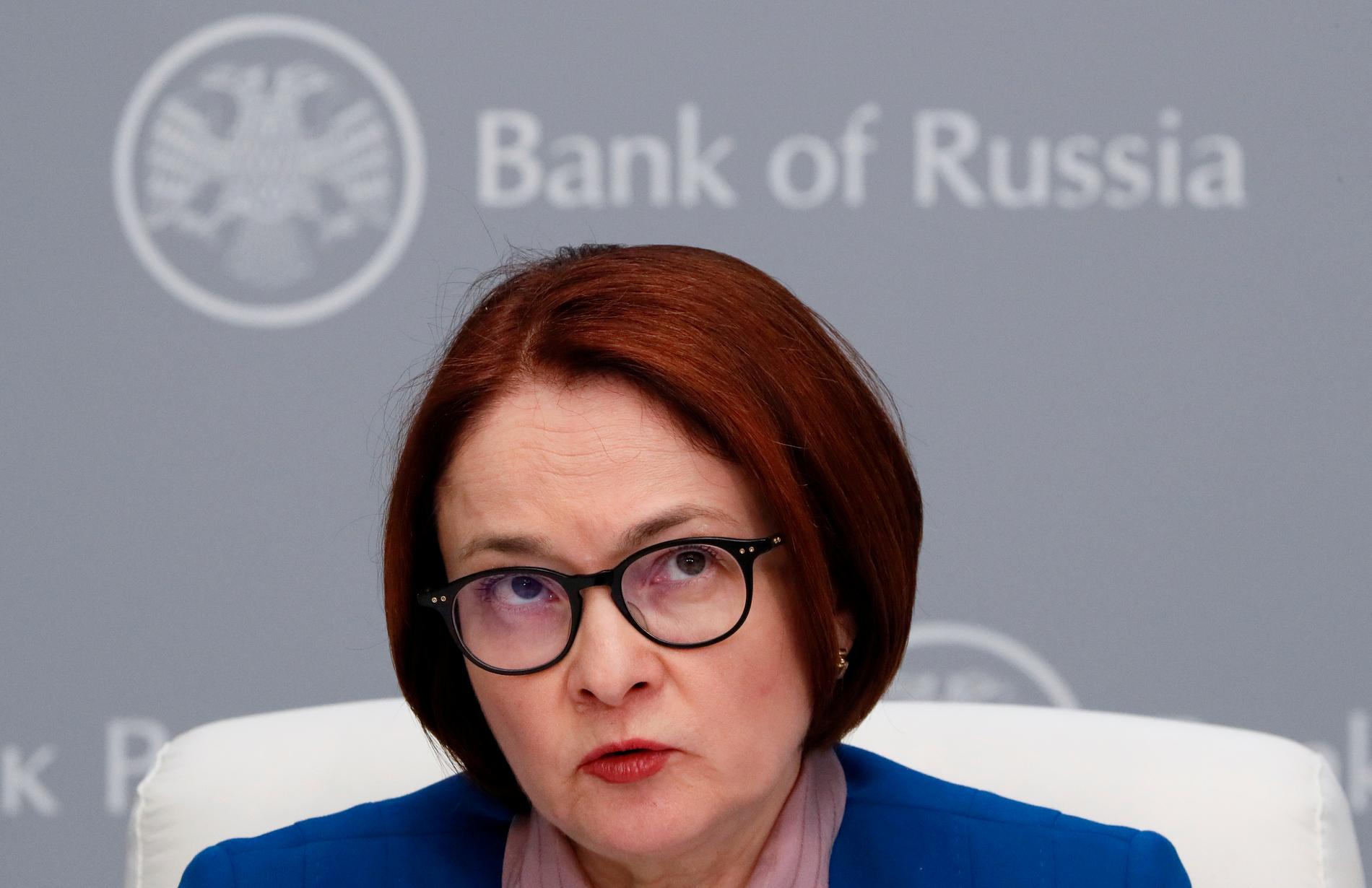War and sanctions seem to hit the Russian economy harder. Now the ruble falls to its weakest in 16 months.
RUBLE CRASH: Central bank governor Elvira Nabiullina recently raised interest rates and introduced a pause in the purchase of foreign currency, but that does not prevent the ruble from halving since its peak in June last year. Photo: Shamil Zhumatov / ReutersPublished:
Less than 50 minutes ago
Updated just now
Copy linkCopy linkShare on FacebookShare on FacebookShare by emailShare by email
Russia’s war against Ukraine and associated foreign sanctions now appear to be hitting the Russian ruble harder.
On Monday, the currency weakened to over 100 rubles to the dollar for the first time since March last year. So far this year, the ruble has fallen over 25 percent against the dollar, and from its peak in June last year, its value has roughly halved.
The development is taking place despite measures taken by the Russian central bank last week, when it announced a halt in purchases of foreign currency for the rest of the year, according to Bloomberg.
Russia also surprised the markets by raising interest rates by a full percentage point to 8.5 percent in July. It is still significantly down from February last year, when the interest rate was raised to 20 per cent.
The central bank expects inflation to end at 5-6.5 per cent this year, but has an inflation target of 4 per cent, twice as high as in Europe and the USA.
Read on E24+
Report: That’s how much companies and kingdoms get away with in tax
– Nobody wants rubles
Central bank governor Elvira Nabiullina has repeatedly explained the ruble’s weakening with the deterioration in foreign trade, and has ruled out intervention to support the exchange rate.
The ruble strengthened significantly after the outbreak of war last year, supported by higher oil and gas prices and strict capital controls.
FALL OF WAR: The ruble has fallen over 25 percent against the dollar this year, after a marked strengthening last year. Photo: Screenshot from Infront
Oil and gas constitute Russia’s largest export revenues, but in the first seven months of the year these revenues have fallen by over 40 percent compared to 2022, according to Financial Times (FT). The reason is new sanctions and the introduction of price ceilings.
In July, however, revenues have picked up again, and exceeded 800 billion rubles for the first time since these measures came into force, which may eventually help the ruble, writes the FT.
While the domestic economy has been buoyed by public spending on the military and social war aid, it has also widened the budget deficit and weakened the ruble.
– There is very little currency coming into the country, so a currency famine has developed, says Vladimir Milov, former deputy energy minister, from his exile, to the FT.
– Imports have now returned to pre-war levels, but now we import all consumer goods and manufactured goods from China, Turkey, Central Asia and the Emirates, and not from the West. You still have to pay for it in some currency, but nobody wants rubles, he adds.
Doubt strength
Last year’s rapid recovery for the ruble was seen as a major victory for President Vladimir Putin, as many Russians pay close attention to currency fluctuations.
However, many doubted the ruble’s real strength, which occurred in the thinnest ruble trading in more than a decade.
Among other things, the country has frozen assets owned by foreign investors and ordered Russian companies to exchange foreign currency for rubles, according to Bloomberg.
US Treasury Secretary Janet Yellen also warned against interpreting the strengthening of the ruble as a sign that the sanctions were not working, because the measures to prevent capital leaving the country were so extensive that the market has been completely distorted, wrote Reuters last year.
ARTIFICIALLY STRONG: Many doubted the ruble’s strength in the wake of the outbreak of war last year, pointing to massive support measures. Photo: DADO RUVIC / Reuters / NTB
Has collapsed before
More and more international sanctions, combined with the flight of global companies from the country, military setbacks and growing international opposition to the atrocities being committed, now seem to hit the country harder.
After the Soviet era, the exchange rate against the dollar has been one of the important economic indicators for Russians. The ruble has collapsed several times, both in the early 90s and when the country defaulted on its international debt in 1998.
During the financial crisis, Russian authorities spent billions of dollars to limit the depreciation of the ruble and prevent bank failures, according to Bloomberg.
In 2014, after the annexation of Crimea and with falling oil prices, central bank governor Elvira Nabiullina decided to let the ruble float freely.
2023-08-14 08:40:03
#Russian #rubles #halved #peak #year #rubles
